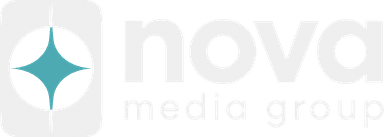Basecamp's Minimalist Approach: When Less PM Software Means More
Most project management tools promise to solve every problem your team might face. They pack in Gantt charts, resource allocation matrices, time tracking widgets, and dozens of integrations. Yet teams using these feature-rich platforms report spending 23% of their workday just managing the management tool itself, according to recent workplace productivity studies.
Basecamp takes the opposite approach. While competitors race to add more features, this intentionally simple project management platform strips away complexity to focus on what actually matters: getting work done together.
The Philosophy Behind Basecamp's Simplicity
Basecamp's creators, the team at 37signals, built their platform around a radical premise: most project management software creates more problems than it solves. Instead of endless customization options and complex workflows, Basecamp offers just six core tools that work the same way for every project.
This constraint-driven design forces teams to adapt their work to fit a proven framework rather than endlessly tweaking settings. The result? Teams spend less time configuring their tools and more time accomplishing meaningful work.
Core Features That Define the Basecamp Experience
Hill Charts: Visual Progress Without the Complexity
Unlike traditional progress bars or percentage trackers, Basecamp's Hill Charts provide an intuitive way to visualize work progress. The left side of the hill represents figuring things out, while the right side shows execution. This simple metaphor captures something percentage-based tracking misses: the uncertainty inherent in creative work.
Teams can see at a glance whether a project is stuck in the problem-solving phase or racing down the execution slope. No complex status reports required.
Automatic Check-in Questions
Remote teams often struggle with maintaining connection and visibility. Basecamp's automatic check-in questions solve this elegantly. You set up recurring questions like "What did you work on today?" or "What's blocking you?" and team members receive prompts at scheduled times.
Responses appear in a dedicated space where everyone can read updates asynchronously. It's like having a standing meeting without the meeting.
The Six-Tool Workspace
Every Basecamp project includes exactly six tools:
- Message Board for announcements and big-picture discussions
- To-dos for task management
- Schedule for deadlines and milestones
- Docs & Files for centralized storage
- Group Chat for quick conversations
- Check-in Questions for regular updates
That's it. No plugins, no add-ons, no configuration options. Every team member knows exactly where to find what they need.
The Distraction-Free Interface Advantage
Basecamp's interface feels refreshingly calm compared to notification-heavy alternatives. There's no real-time presence indicators, no typing notifications, and no pressure to respond immediately. The platform encourages thoughtful, asynchronous communication over reactive chat.
This design choice reflects a deeper philosophy about work. Constant interruptions and real-time communication often creates an illusion of productivity while actually fragmenting attention and reducing deep work time.
Who Benefits Most from Basecamp's Approach?
Creative Agencies and Design Teams
Agencies managing multiple client projects find Basecamp's project-centric organization particularly effective. Each client gets their own space with consistent tools, making it easy to context-switch without confusion.
Remote-First Companies
Organizations with distributed teams appreciate Basecamp's asynchronous-first design. Team members in different time zones can contribute equally without needing to be online simultaneously.
Small to Medium Businesses
Companies with 10-100 employees often find Basecamp hits the sweet spot between email chaos and enterprise complexity. The flat learning curve means new team members can contribute immediately.
Pricing That Reflects the Philosophy
Basecamp offers two straightforward pricing tiers:
- Basecamp Personal: Free for up to 3 users and 20 projects
- Basecamp Business: $99/month flat rate for unlimited users
This simple pricing structure, unchanged since 2014, eliminates the per-user calculations that complicate budgeting with other tools. A team of 10 pays the same as a team of 100.
When Basecamp Might Not Be the Right Fit
Despite its strengths, Basecamp's minimalist approach isn't universal. Teams requiring detailed resource planning, time tracking, or complex dependency management might find it limiting. Software development teams using Agile methodologies often prefer specialized tools like Jira or Linear.
Similarly, enterprises needing extensive customization, compliance features, or advanced reporting typically require more robust platforms like Monday.com or Asana.
Making the Minimalist Choice Work
Adopting Basecamp requires embracing its constraints rather than fighting them. Successful teams report these strategies:
Start with one project: Don't migrate everything at once. Pick a single project and run it entirely in Basecamp for a full cycle.
Resist workarounds: When you hit a limitation, ask whether you really need that feature or if you're just used to having it.
Embrace asynchronous communication: Schedule specific times for checking Basecamp rather than keeping it open all day.
Use Hill Charts religiously: They only work when teams update them regularly with honest assessments.
The Bottom Line on Basecamp
In a market obsessed with feature lists and integration counts, Basecamp's restraint feels revolutionary. It won't track your time, generate Gantt charts, or integrate with hundreds of other tools. What it will do is provide a calm, organized space where teams can actually focus on their work.
For businesses drowning in tool complexity, Basecamp offers something valuable: permission to do less. Sometimes, that's exactly what teams need to accomplish more.
The question isn't whether Basecamp has enough features for your team. It's whether your team has the discipline to thrive within its elegant constraints. For those who do, the rewards includes increased focus, reduced tool fatigue, and a renewed emphasis on the work itself rather than the tools used to manage it.
